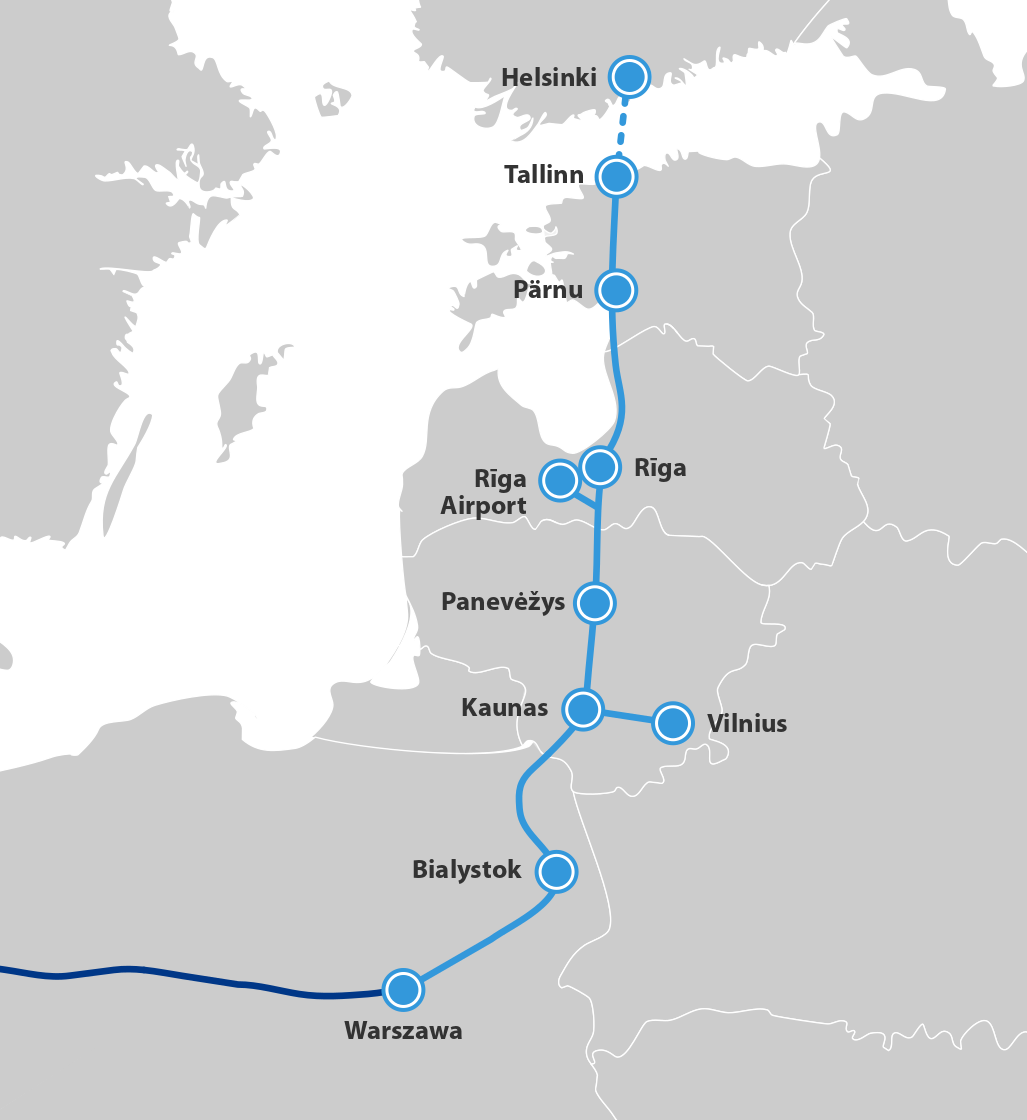Rail Baltica could lift 5,000 trucks from Polish-Lithuania border per day
More than 5 thousand trucks per day currently cross the border between Poland and Lithuania. Imagine of this could be shifted to rail. It is an ambition al but unrealistic, as the megaproject Rail Baltica has set its eyes on an interoperable railway network connecting Poland with the Baltic States.
Kaspar Briskens, Head of Strategy & Development at Rail Baltica will be speaking about the project at the Railfreight Summit in Poznan, which takes place on 1, 2 and 3 September this year. Last Friday, he talked about the benefits of the project for Poland during RailFreight Live.
Not a lot of rail
“Those 5 thousand trucks give you a good estimate of the volumes of freight crossing the border at the moment”, Briskens said. It is the estimate that has helped to calculate the business case of the railway line, one that speaks for itself. “There is currently very limited railway traffic between the countries.”
There are several reasons, one of them being the gauge break, he explains. In the Baltic countries of Latvia, Estonia and Lithuania there is a broad gauge railway line, while most of Europe operates on standard gauge. There is a railway line between Poland and Latvia, but it is not used a lot. The same goes for the transloading facility at Šeštokai. “For commercial reasons, this facility is not extensively used. There is very little north-south movement”, Briskens added.
Story continues below the image

Everything interoperable
With the Rail Baltica project, this is all about to change. The key word is interoperability; everything should be aligned, from electrification standards to digitalisation to infrastructure capacity, the Latvian speaker explains. “We want to provide a one-stop shop for traffic from Poland all the way up to Lithuania.”
On the Rail Baltica line, this means 25 tonne axle load and facilities for 1050-metre freight trains. High-speed trains will be able to pass on a railway line that is both for passnegers and freight. And it complies with ERTMS specifications. “As a greenfield company, we can accommodate that.”
Timeframe
Although the objectives are high, there is still a lot of work to be done. First construction started this year, but it will not be for another seven to eight years until the full line is operative, Briskens said. When it comes to the connection to Poland, which runs up till Warsaw, the section is developed up till Bialystok. “Still to be developed is the connection from Elk till the Lithuanian border.”
Once all infrastructure is there, there will be a much more efficient supply chain, he says, where trucks, which are a strategic partner to rail, are taking care of the first and last mile in a lower radius. “Rail Baltica will be taking care of the larger volumes of container loads, trailer loads, and also piggybacks.
Indeed, the Rail Baltica Operational Plan for 2026–2056 revealed that Rail Baltica would be a great stimulus for intermodal transport in the Baltic region. “80 per cent of freight trains to run on the route will carry containers and trucks on flatcars”, the plan reads.
Watch the show
Below you can watch the RailFreight Live show with Kaspars Briskens:
morenews
Networking dinner 1
Networking dinner Networking is the most crucial element of RailFreight Summit! On the evening of 16 April 2024 from 18:00-21:00, a networking dinner will take place. This seated dinner offers the perfect opportunity to get together with your fellow industry professionals in a formal setting. Enjoy a multiple-course dinner, and drinks while making important new… Read more ›
How can this new terminal boost EU-Balkans intermodal transport?
On 19 April, Rihard Dobo will also speak at the RailFreight Summit Poland. He will explain the significance of the Horgos Terminal project and its potential to boost intermodal traffic to and from the Western Balkans and the broader southeast Europe region. The Serbia-Hungary bottleneck “As Serbia and the wider Western Balkan region is not… Read more ›
Malaszewicze upgrade may be financed by Polish government
The EU has in fact decided not to fund the modernisation project planned in the Małaszewicze Transshipment Area. The area includes the terminals Kobylany, Małaszewicze, Bór, and Chotyłów. This project was put on hold, waiting for possible public funds, which now may be on their way. To see this crucial transshipment area with your own… Read more ›
